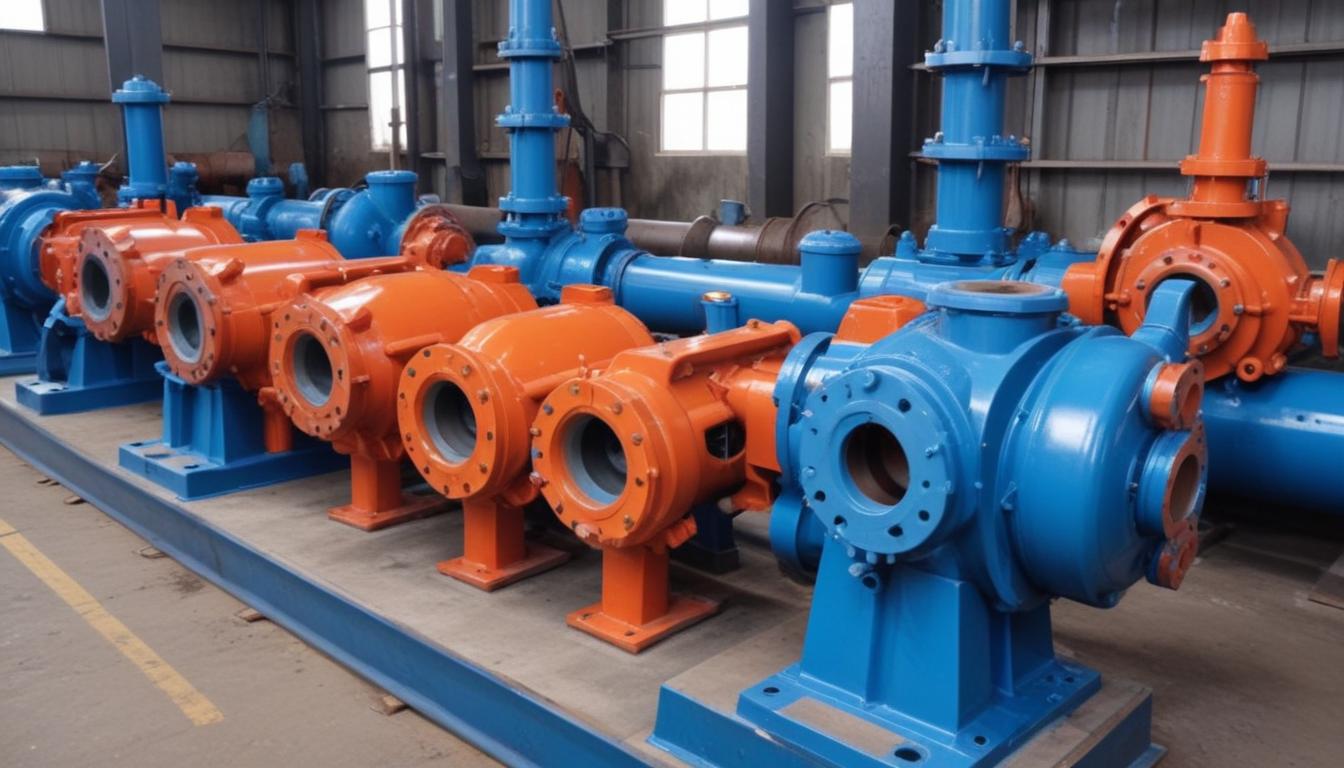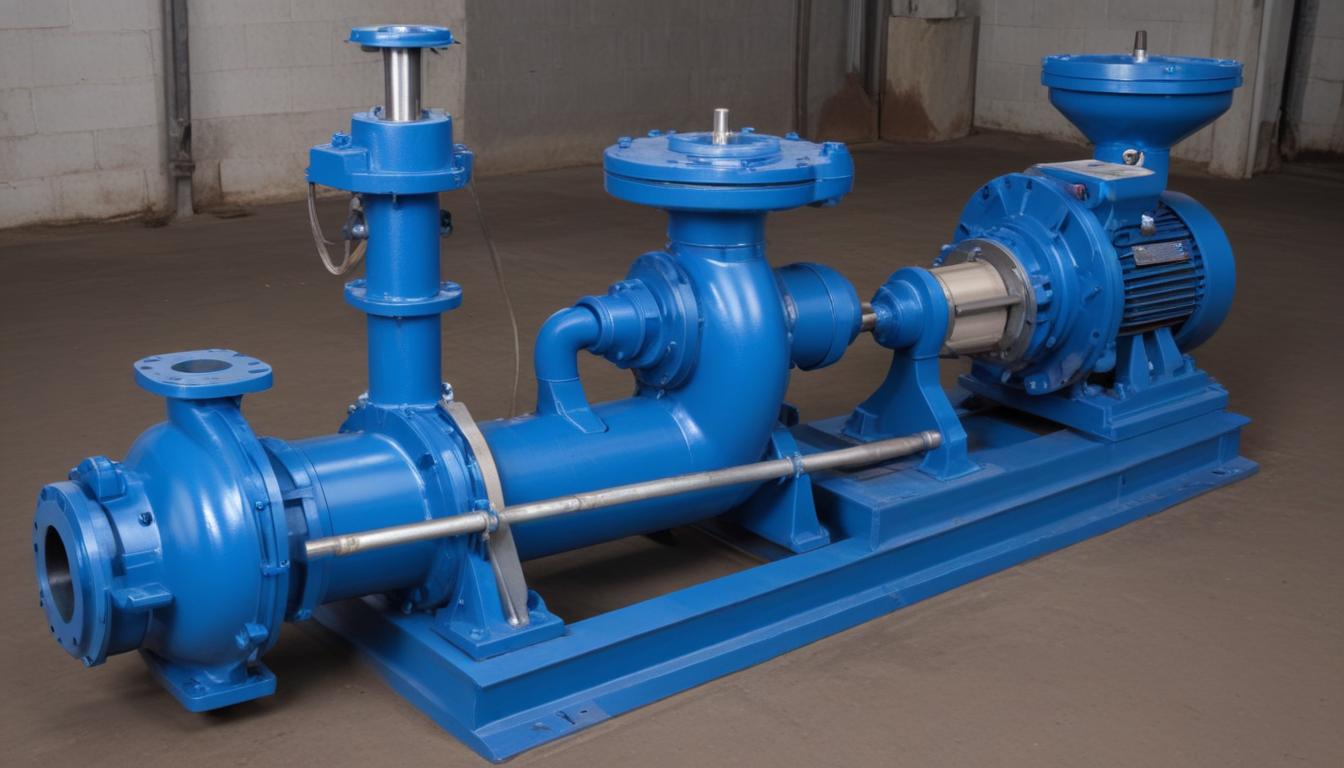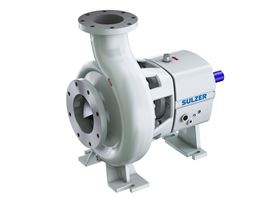Maintenance tips for extending the lifespan of progressive cavity pumps
Progressive cavity pumps are a type of positive displacement pump that are commonly used in a variety of industries due to their ability to handle viscous fluids and provide a steady flow rate. These pumps consist of a helical rotor and a stator, which work together to create a series of cavities that transport the fluid through the pump. The design of the progressive cavity pump allows it to maintain a constant flow rate regardless of changes in pressure, making it ideal for applications such as wastewater treatment, food processing, and oil extraction.
The lifespan of progressive cavity pumps can be significantly influenced by the implementation of appropriate maintenance strategies. Regular maintenance not only ensures optimal performance but also minimizes the risk of downtime and costly repairs. Understanding the operational characteristics of these pumps, including the impact of viscosity, temperature, and flow rate, is crucial for enhancing their efficiency and durability.
Operationally, progressive cavity pumps are capable of handling shear-sensitive fluids with minimal damage, which makes them suitable for transporting slurries, gels, and other non-Newtonian fluids. Their ability to create a gentle pumping action makes them a preferred choice in applications where fluid integrity is paramount. Engineers should pay close attention to the pump’s operational parameters and environmental conditions to maximize efficiency and extend their lifespan.
The unique mechanics of progressive cavity pumps and their maintenance requirements are essential for ensuring reliable operation across various industrial applications. Implementing regular monitoring and adherence to maintenance best practices will help users to fully leverage the advantages offered by these pumps.
Key maintenance practices
To ensure the optimal performance and extended lifespan of progressive cavity pumps, it is essential to adopt specific maintenance practices. Regular maintenance routines not only enhance operational efficiency but also mitigate the risk of unforeseen breakdowns. Here are the key maintenance practices to consider:
- Routine Inspection: Conduct regular inspections of the pump and its components, focusing on the rotor, stator, and associated seals. Look for signs of wear, corrosion, or material degradation, which can indicate the need for replacement.
- Seal Maintenance: Monitor the condition of the seals and replace them as necessary. Worn or damaged seals can lead to leakage, ultimately affecting pump performance and reliability.
- Lubrication: Ensure that all moving parts are adequately lubricated to reduce friction and wear. Use the recommended lubricant in accordance with the pump manufacturer’s specifications.
- Cleaning: Regularly clean the pump to prevent the buildup of debris or deposits, particularly when handling viscous or viscous-shear-sensitive fluids. Cleaning helps maintain hydraulic efficiency and prolongs component life.
- Vibration Analysis: Implement vibration analysis as part of predictive maintenance. Changes in vibration patterns can indicate potential issues, allowing for early intervention before severe damage occurs.
- Temperature Monitoring: Monitor the operating temperature of the pump closely, as overheating can lead to rapid wear of the rotor and stator. Ensure that the pump operates within the designated temperature range.
- Flow Rate Assessment: Regularly check the flow rate against the pump’s specifications. Significant deviations may suggest wear or blockage, necessitating further investigation.
- Documentation: Maintain detailed records of all maintenance activities, including inspections, repairs, and replacements. Documentation is vital for tracking performance trends and informing future maintenance schedules.
In addition to these practices, developing a comprehensive maintenance schedule tailored to the specific operational environment and fluid characteristics is vital. This proactive approach allows for timely intervention and minimizes the risk of costly downtime, thereby ensuring the longevity of progressive cavity pumps.
Common issues and troubleshooting

Common issues with progressive cavity pumps often arise from a combination of operational stresses and environmental factors. Understanding these issues is crucial for engineers and pump users in order to troubleshoot effectively and maintain optimal functioning. Here are some of the prevalent challenges faced when using progressive cavity pumps, along with troubleshooting steps to address them:
- Leakage: One of the most frequent problems with progressive cavity pumps is fluid leakage, which can occur due to worn seals or improper assembly. To troubleshoot leakage, inspect the seals for signs of wear or damage, and replace them as necessary. Additionally, ensure that the pump is properly aligned and tightened, as misalignment can exacerbate leakage issues.
- Reduced Flow Rate: A drop in flow rate may indicate blockages or wear in the rotor or stator. Begin by checking for obstructions in the inlet or discharge lines. If the lines are clear, perform a close inspection of the rotor and stator for surface deterioration or deformation. Replacing worn components may be necessary to restore flow rates to optimal levels.
- Increased Vibration: Excessive vibration can lead to premature wear and failure of pump components. To diagnose the cause of increased vibration, perform a vibration analysis and check for misalignment or imbalance. Adjusting the positioning of the pump or balancing the rotating elements may resolve the issue.
- Overheating: Operating a progressive cavity pump at temperatures outside of the recommended range can result in accelerated wear and decreased lifespan. If overheating occurs, inspect the cooling systems and ensure that all lubricants are at appropriate levels. Additionally, check for obstructions in the fluid path that may restrict flow and increase heat generation.
- Noise: Unusual noises during operation can serve as indicators of potential problems, such as cavitation or cavitation-induced damage. If noise levels increase, investigate the pump’s fluid characteristics and ensure that the pump is appropriately sized for the application. Periodically checking fluid levels and maintaining the proper viscosity will help minimize noise issues.
When troubleshooting these common issues, it’s essential to maintain accurate documentation of all findings and actions taken. This documentation can serve as a reference for future problems and help in fine-tuning maintenance practices to extend the lifespan of progressive cavity pumps. Implementing a proactive maintenance strategy that includes regular inspections and addressing issues promptly will not only enhance reliability but also improve the overall performance of the pump.
Best practices for installation
Proper installation of progressive cavity pumps is crucial to ensure optimal performance and longevity. A well-executed installation can significantly enhance the efficiency of these pumps while minimizing potential issues that might arise during operation. Here are several best practices for installing progressive cavity pumps, focusing on crucial factors such as alignment, mounting, and piping.
- Foundation Preparation: Ensure that the pump is installed on a stable and level foundation to prevent excessive vibration and mechanical stress. The use of a concrete or steel base can provide the necessary support and minimize movement during operation.
- Alignment: Proper alignment of the pump and motor is essential to prevent premature wear. Utilize laser alignment tools to ensure that the drive shaft is aligned with the pump shaft. Any misalignment can lead to increased vibration and reduced lifespan of the pump components.
- Mounting Procedures: Follow manufacturer guidelines for mounting the pump securely to the foundation. Use appropriate anchors and brackets to keep the pump stable and avoid potential operational issues. Ensure that the mounting surface is free from debris that could hinder the securing process.
- Piping Configuration: When connecting piping to the pump, it’s vital to follow the recommended configuration to minimize pressure drops and turbulence. Use gradual bends instead of sharp angles to facilitate a smooth flow and reduce stress on the pump’s rotor.
- Support for Piping: Ensure that all piping is properly supported to prevent weight from being placed on the pump. This alleviates stress on the pump connections, which can lead to leaks and decreased efficiency over time.
- Vibration Isolation: Incorporate vibration isolation components within the installation setup. This can include rubber mounts or spring isolators that reduce the transfer of vibrations from the pump to the surrounding environment, thus protecting sensitive equipment.
- Sealing and Gasket Use: Properly apply seals and gaskets during installation to prevent any fluid leaks. Ensure that all joints are tightly secured and that the appropriate type of gasket material is utilized according to the fluid being handled.
- Flushing Before Startup: Prior to the initial startup of the pump, conduct a flushing procedure to remove any debris or contaminants within the system. This prevents foreign materials from causing damage to the rotor and stator during operation.
- Electrical Connections: When connecting the pump’s electrical systems, ensure that all wiring complies with local electrical codes and the manufacturer’s specifications. Verify the operating voltage matches the pump’s requirements to prevent electrical failures.
- Testing After Installation: After completing the installation, conduct thorough testing to ensure that all components are functioning correctly. Check for leaks, monitor vibrations, and assess flow rates to confirm that the pump operates within the established parameters.
By adhering to these installation practices, engineers and maintenance personnel can help ensure the reliability and lifespan of progressive cavity pumps. Remember, a meticulous installation not only helps to avoid common operational issues but also lays the foundation for effective maintenance and performance monitoring in the long run.
Monitoring performance and efficiency

Monitoring the performance and efficiency of progressive cavity pumps is fundamental to maximizing their operational lifespan and reliability. To achieve this, engineers and pump users should implement a systematic approach that focuses on key performance indicators along with routine assessments. Several methods and tools can be employed to effectively monitor pump performance:
- Flow Rate Measurement: Accurately measure the pump’s flow rate using flow meters installed in the discharge line. Regular comparisons of actual flow rates against design specifications will help detect performance degradation. A significant reduction in flow could indicate internal wear or blockages that require immediate attention.
- Pressure Monitoring: Install pressure gauges at the inlet and outlet of the pump to monitor pressure differentials. Deviations from normal operating pressures may signal problems such as cavitation, blockages, or misalignment, which could lead to premature wear and failure.
- Power Consumption Analysis: Monitoring the electrical power consumption of the pump provides insight into its efficiency. An unexpected increase in power usage could indicate issues such as increased friction due to lack of lubrication or wear in the components. Comparing power draw against historical data can highlight potential problems early.
- Vibration Monitoring: Implement vibration analysis tools to track changes in vibrational patterns, which could signify mechanical imbalance or misalignment. Regular vibration analysis can help predict failures before they lead to significant downtime or repairs.
- Temperature Monitoring: Temperature sensors should be strategically placed to monitor the operating temperature of both the pump and the fluid. Elevated temperatures can indicate lubrication problems or excessive friction, leading to accelerated wear of the rotor and stator components.
- Fluid Characteristics Evaluation: Regular analysis of the fluid being pumped, including viscosity, density, and temperature, ensures that the pump is operating within acceptable parameters. Changes in fluid properties can affect pump performance and should be monitored to prevent operational issues.
- Data Logging and Analysis: Utilize data logging systems to record performance metrics over time. Analyzing historical performance data allows engineers and maintenance personnel to identify trends, predict maintenance needs, and make informed decisions regarding operational adjustments.
- Routine Inspection and Audit: Conduct scheduled maintenance audits and visual inspections of the pump and surrounding systems. Look for physical signs of wear or damage, and ensure that all monitoring equipment is operational. Regular audits help to validate that monitoring systems and practices are effective.
Integrating these monitoring practices into routine maintenance protocols significantly enhances the reliability and efficiency of progressive cavity pumps. By continually assessing performance metrics, users can proactively address issues, thereby extending the lifespan of the pumps and minimizing the risk of unexpected failures. This disciplined approach not only contributes to steady operational success but also fosters long-term cost savings through reduced downtime and maintenance expenses.



